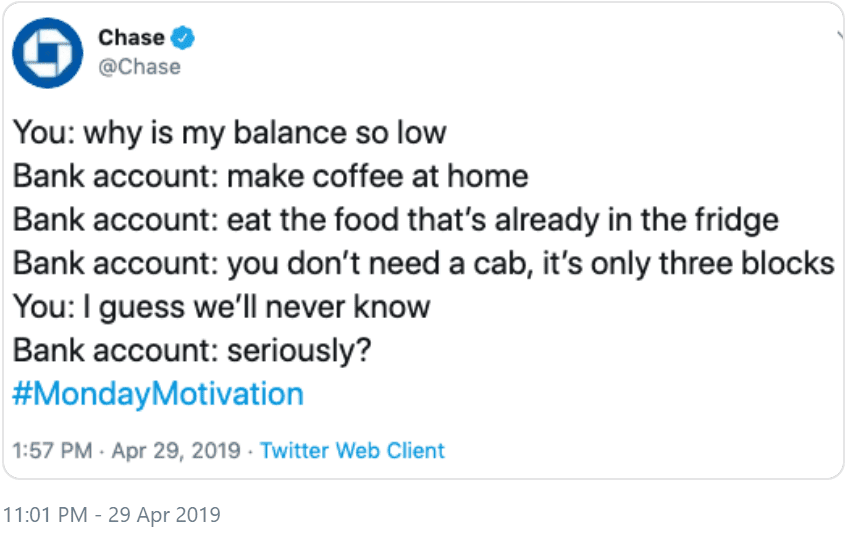Last month I had the pleasure of presenting to the AFP Las Vegas chapter. The topic? The components of modern day storytelling and what nonprofits can learn from marketing gone wrong. Much thanks to Veronica Atkins, Board President and the entire Board for hosting me!
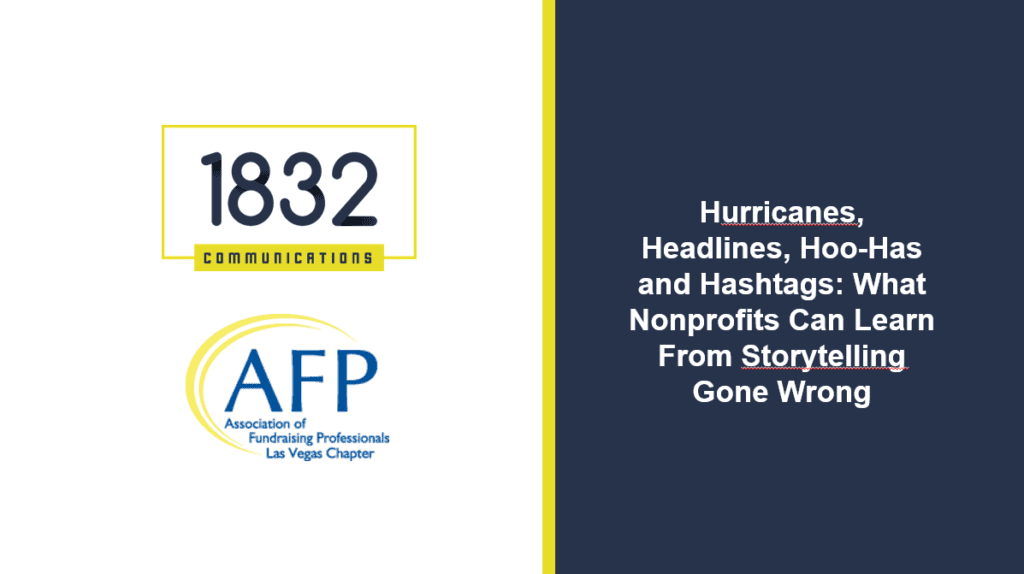
It was a fun presentation mixing the good and the bad. A chance to groan, cringe, shake one’s head in disapproval but also to smile and laugh. The goal was to learn from the mistakes and successes of others.
Below is a brief roundup of the presentation, with some of the components of modern day storytelling. At the end of this post you’ll find a “cheat sheet” of do’s and dont’s when posting publicly which you can download, print and keep handy.
Images
If a picture is worth a thousand words…
Over 50% of tweets now have an image, video or GIF. So images help your posts stand out when people are scrolling through their feed.
You can also use images to educate and engage. The picture below from Boston Children’s Hospital is not only eye-catching but tells the story of their mission through the lens of one person. This is the type of post that will garner genuine engagement.
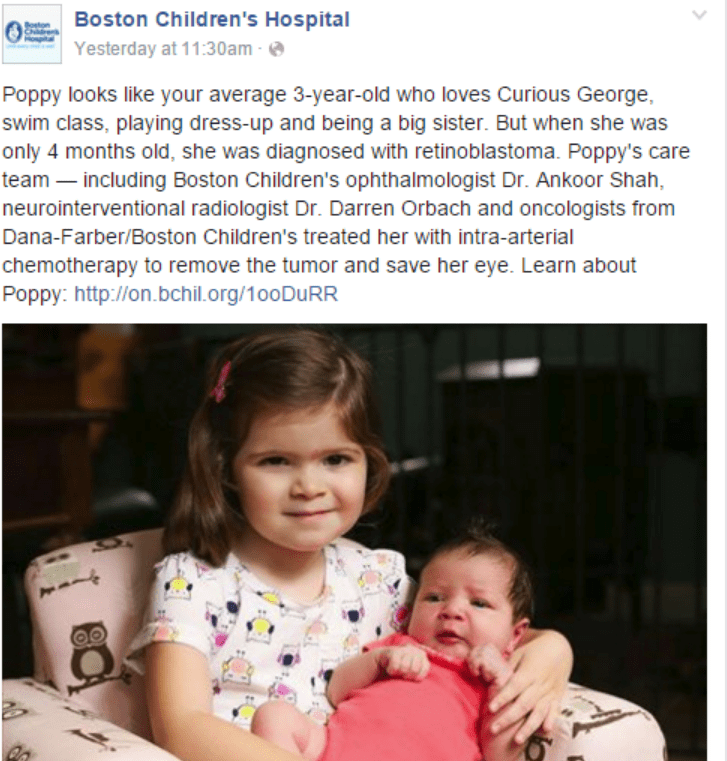
Lesson: Use images that help tell your story.
Hashtags
Joining the conversation by using a trending or popular hashtag is great. One major caveat: Know in advance why the hashtag is trending.
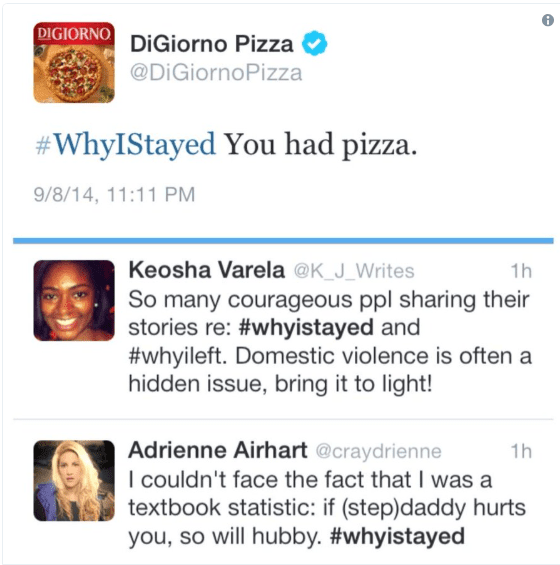
Take the image above, for example: On September 8, 2014, the hashtag #WhyIStayed was trending. Women across Twitter were telling- some for the very first time in public- their story of domestic and verbal abuse. But they were adding why they ended up staying with their abusive partner.
The person managing the DiGiorno Pizza Twitter account saw the hashtag trending number one and decided to enter the conversation. They forgot to check why it was trending. That led to their insensitive and ill-timed tweet, for which they received (rightfully so) plenty of blowback.
Lesson: Join the conversation. Just know what conversation you’re joining.
Be creative- use popular culture
People love to know that the face behind the logo has a personality. And if humor is involved, all the better!
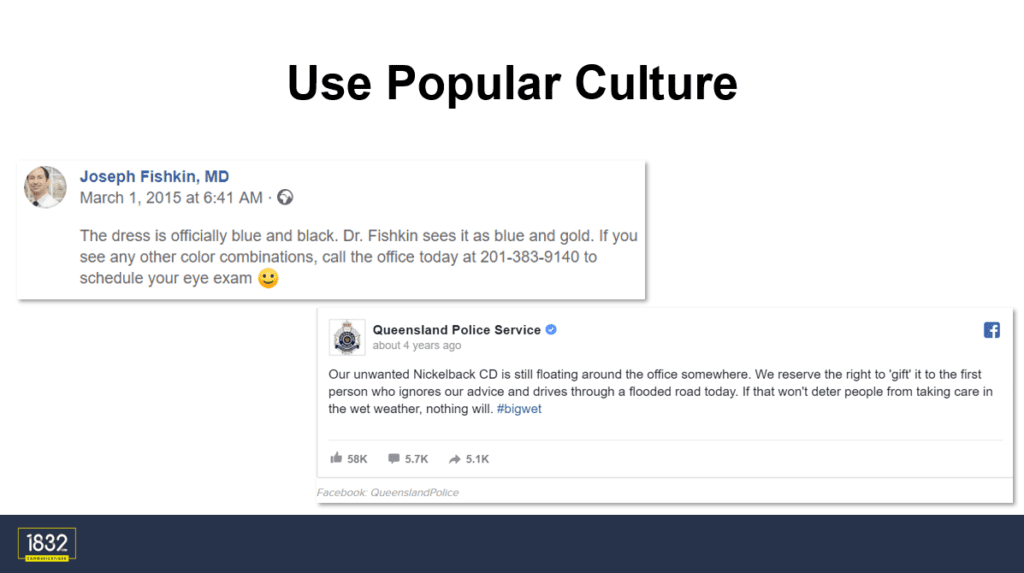
Here are two great examples of utilizing popular culture humorously and to educate the public. Joseph Fishkin the ophthalmologist. (For the record, gold.) The police in Australia. A great way of reminding people to come in for an eye exam or not to drive in a flood.
Lesson: Use popular culture to connect with your audience. One lingering question: I don’t know their music at all but why do people hate Nickleback so much???
Copywriting and Collaboration
My favorite teacher taught me to always double check before submitting. She would dock me one point if I misspelled a word in a homework assignment. To this day I hate making spelling mistakes in posts or tweets.

Before you submit something, you should always check to make sure there are no mistakes (ad on left). At the same time, I highly suggest collaborating with colleagues before submitting a piece. Need a catchy title? Pass the piece around and solicit suggestions. The picture on the right above? The New York Daily News had a story about pitcher Matt Harvey’s bladder infection. But they didn’t just share the article: They posted all the different title suggestions made by reporters and editors in the newsroom. Awesome!
I would also add: Going to launch a marketing campaign? Have people from outside your organization review it. They might catch some mistakes you hadn’t thought of. Just ask Breast Cancer UK.
Lesson: Clay’s wrong about the Oxford comma.
There it is. @EphraimGopin on copywriting. Bam!
(He’s still wrong about the Oxford comma tho) pic.twitter.com/bJLTw3DHvU— T. Clay Buck, CFRE (@tclaybuck) July 16, 2019
Engage and educate
In June, the U.S. Holocaust Memorial Museum posted an Instagram Story on what would have been Anne Frank’s 90th birthday. They used images and content to tell the story of her life. They used the Questions sticker to encourage people to ask questions. This allowed them to engage and interact with their audience, while at the same time educating. All slides that answered questions included an image.
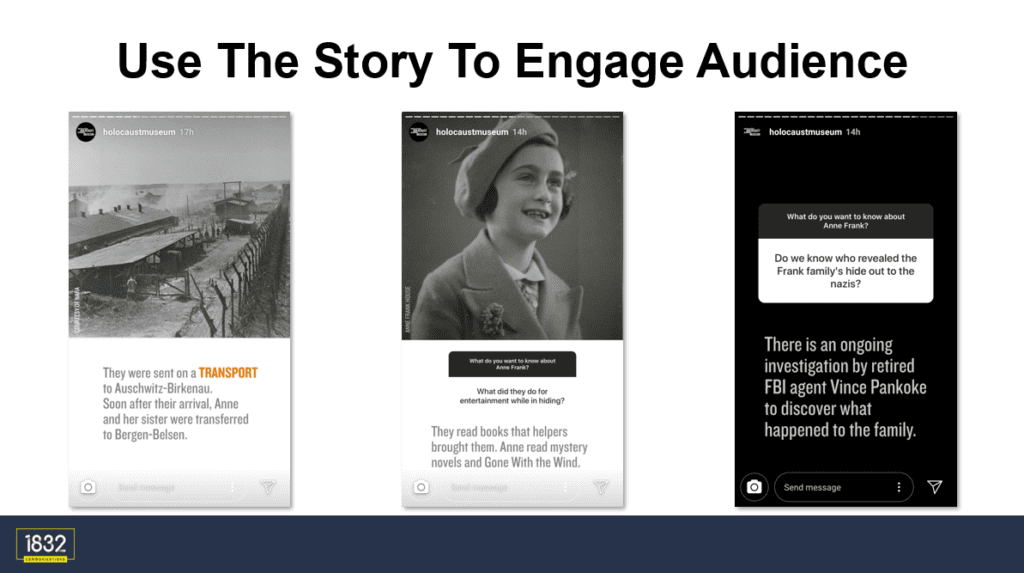
A fantastic example of modern day storytelling.
Cheat sheet
As promised, here is my modern day storytelling cheat sheet. It has a list of do’s and don’t’s for your team of storytellers. Download, print and keep handy near your desk. Hopefully your org already has a social media policy and you know what to post and what to stay away from.
Friends IRL
I am lucky that Twitter has introduced me to some of the most wonderful people out there, many of whom work at nonprofits. Over the last 3+ years, I have spent my summers traveling North America and meeting these people in real life. I ALWAYS prefer an IRL meeting!
One such person is data scientist, fundraising and copywriting expert T. Clay Buck. If you’re not following him on Twitter, do so now. I was lucky enough to spend a few hours with him during my visit to Vegas. Took the online relationship offline. Thank you Clay for all you did during my stay in Vegas.
As I do with every IRL meeting, I take a horrible “ussie” (credit to the wonderful Miriam Brosseau for that term). Please don’t mind the sketchy liquor store behind us. Because Vegas.
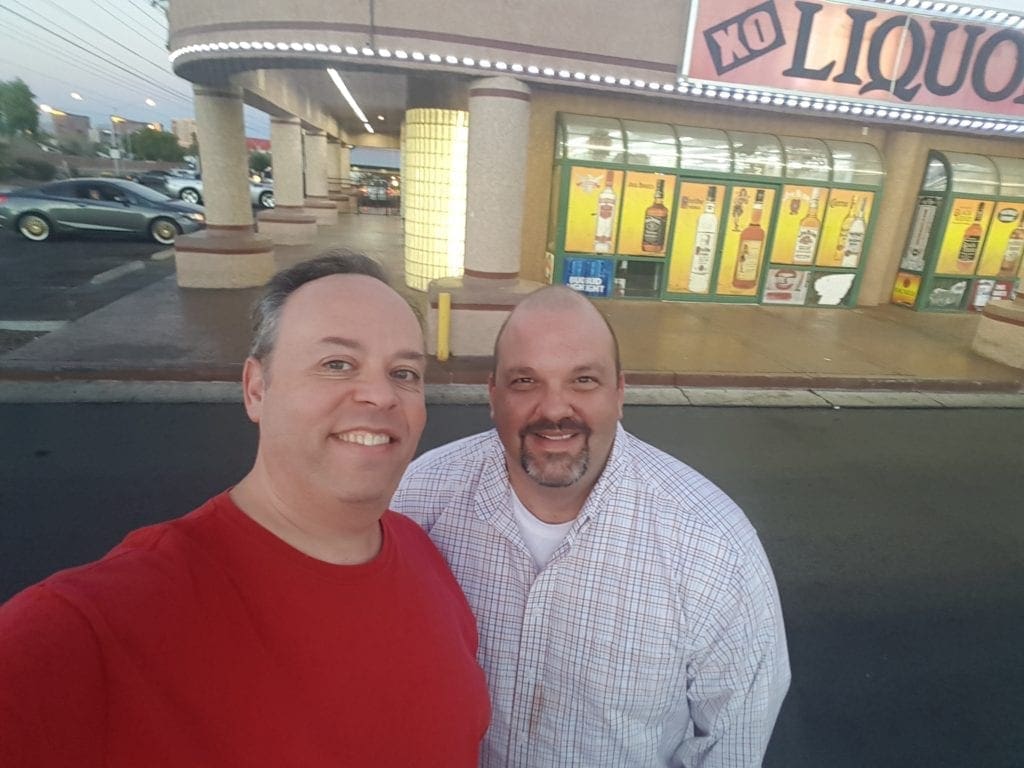
Is your organization looking to solve your current communications and marketing challenges? Then let’s talk! Be in touch to set up a free 30 minute call so we can start discussing how to improve your bottom line results.
Hey nonprofit pro! I publish an e-newsletter Monday-Thursday which delivers content to your Inbox that’s relevant for any nonprofit role you fill. Expand horizons with one click. Subscribe today!


